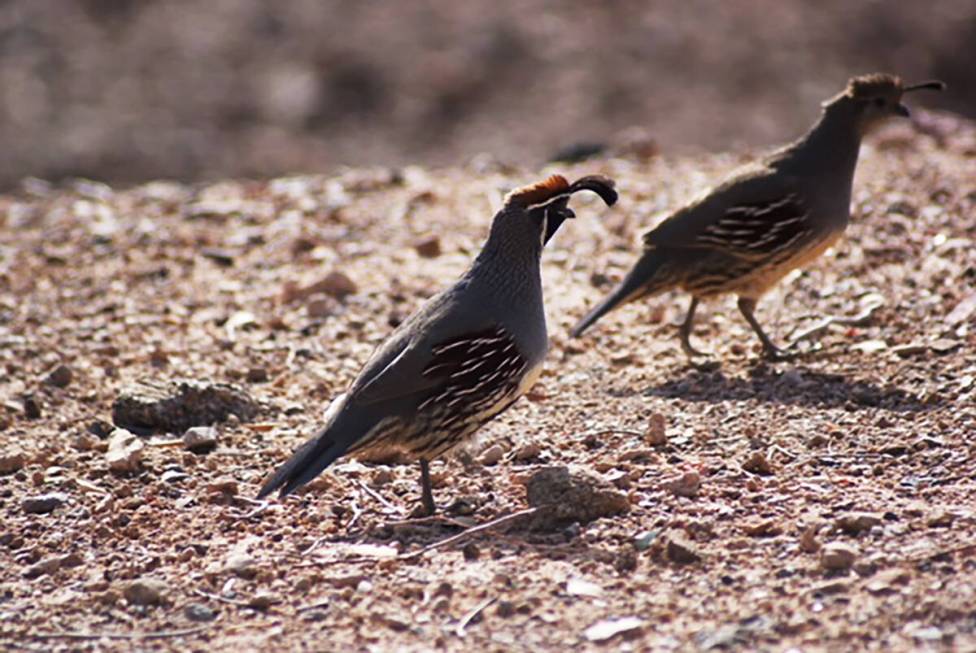Bird population needs assist from Mother Nature

Anyone who has spent time beating the brush in search of quail and chukar partridge this fall has seen firsthand the effects of long-term drought on the birds’ populations.
The hunting season has been long on looking and short on finding. That’s true not only in Southern Nevada but also in nearby southwestern Utah.
Couple more than 20 years of drought with two of the driest years on record and you have habitat conditions that have significantly limited bird production. Even in those places where the birds nested successfully, habitat conditions are such that chick survival has been exceptionally low. The result is low bird numbers and small coveys.
There are rumors of isolated pockets with higher bird numbers, but if that is true no one is sharing the details. If you are lucky enough to find a covey of birds, be sure to limit your take so there are birds left on the landscape for future reproduction needs.
Even Arizona, which is home to three quail species and generally boasts large quail numbers, has seen a reduction in bird numbers.
Larisa Harding, Small Game Program Manager for the Arizona Game and Fish Department (AZGFD), told the folks at Quail Forever, “Our quail populations took a real hit with the drought. The lack of winter rains this past year meant reduced breeding activity and fewer young Gambel’s and scaled quail going into this summer and fall. Gambel’s quail appeared to delay breeding or laying this spring.”
Late summer rains did provide much needed water that resulted in some green up on the Arizona landscape that will help carry bird numbers into the winter, but it is going to take multiple good water years for bird populations to come back to historical norms.
The same is true in Nevada and Utah. In other words, we need significant help from Mother Nature.
In the meantime, wingshooters can take advantage of Arizona’s second dove season. Although the larger whitewing doves have already moved south into Mexico, mourning doves are both abundant and widespread.
The daily bag limit is 15 birds, all of which must be mourning doves. The possession limit after opening day is 45. The second season opened Nov. 19 and runs through Jan. 2.
There is no limit on Eurasian collared doves in Arizona. The AZGFD is encouraging hunters to harvest as many of the invasive birds as possible.
If you are interested in hunting javelina or wild turkey, Arizona has more 1,500 permit-tags left over following their 2022 spring tag draw. Most of those are for the state’s handgun, archery or muzzleloader (HAM) javelina season (931), but there are also archery-only (322), general javelina (205) and youth-only (62) tags available.
Only 16 general turkey tags are available but are worth the effort. AZGFD will accept paper applications for the leftover hunt permit-tags starting Monday, Nov. 29. The paper application is available for download from the agency’s website (www.azgfd.com/Hunting/Draw/).
Speaking of turkey tags, it also is about time to apply for Utah’s 2022 limited-entry spring wild turkey hunt. The application period gets underway Dec. 1 with a deadline of Dec. 27. Applications can be submitted online through the Utah Division of Wildlife Resources website (www.utah-hunt.com) or by calling the nearest DWR regional office. For Southern Nevada that means calling the Cedar City office at 435-865-6100.
A total of 1,952 limited-entry tags are available across the DWR’s five regions. The hunt will take place April 9-28, 2022. Tags for the general statewide turkey season will go on sale Feb. 24.
Freelance writer Doug Nielsen is a conservation educator for the Nevada Department of Wildlife. His “In the Outdoors” column is not affiliated with or endorsed by the NDOW. Any opinions he states in his column are his own. Find him on Facebook at @dougwritesoutdoors. He can be reached at intheoutdoorslv@gmail.com